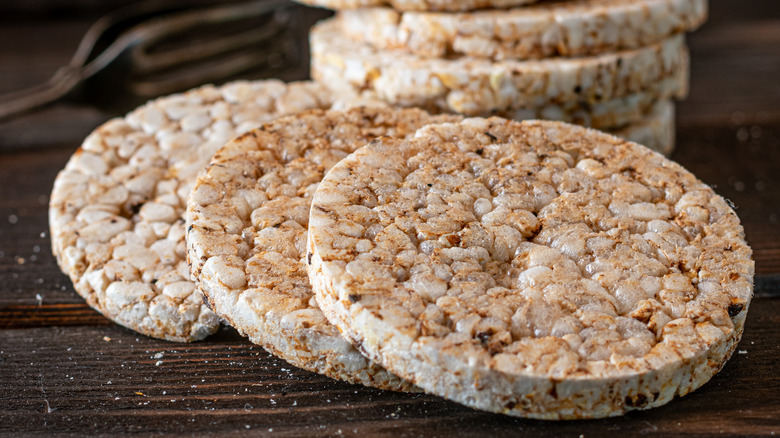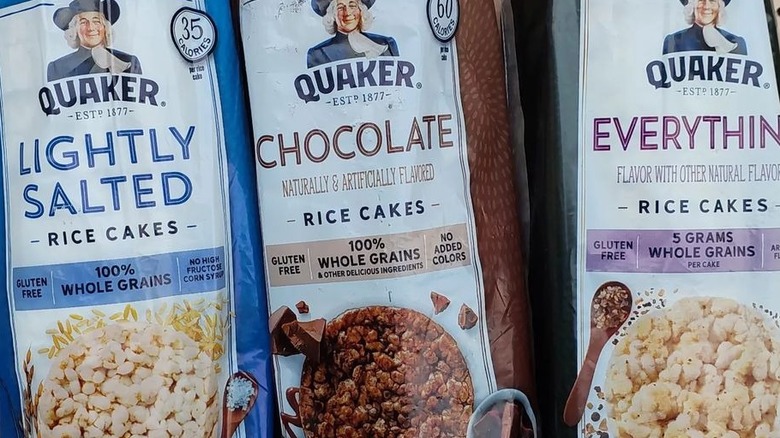What Are Rice Cakes Actually Made Of?
Ah, the '80s! In the era of big hair, leg warmers, and jazzercise in full make-up, Americans were obsessed with fat grams. It was when rice cakes hit the market in a big way with companies such as Quaker and Chico-San dominating the market while answering the fat-free call for alternative, healthy snacking.
Folks topped the processed disks with everything from cream cheese and peanut butter to making sandwiches and pizzas out of them. Chicago Tribune even published an eggs Benedict recipe that replaced the English muffin with what nutritionist Maria Miranda described as tasting first like "eating your coffee cup." Miranda compared the acquired taste of rice cakes to popcorn. But, have you ever seen someone chowing down on a sack of rice cakes at the movies? Oh, it's doubtful!
So, with more people now going gluten-free, rice cakes have come a long way from Styrofoam-like pucks. While the coaster-like dupe will never be the same as a fresh baguette or saltine, they do offer a satisfying crunch. This is due to the process used to make rice cakes, which transforms the grain into a firm, low-calorie, airy snack.
The process
The American rice cake has origins way before the '80s, when botanist Alexander Pierce Anderson found that rice puffed up when pressure cooked in 1901. This finding paved the way for many of your favorite breakfast cereals. Anderson's steam-puffed rice snack was a hit, and the concept of puffed rice was eventually acquired by Quaker. According to Eater, Quaker first launched rice cakes as we know them in the mid-80s as "a low-carb alternative to bread."
Essentially, rice cakes are nothing more than rice and water. It's the process that transforms steamed rice into a crispy cake. Well, at least it's hopeful to do so. Quaker explains its rice cakes are made by cooking rice in small, individual-sized cake pans. Pressure is simultaneously applied, which causes the grains to adhere to one another as they puff up. The different flavors are added after the cakes dry. If you find that your bag of rice cakes isn't as crispy as you like, any combination of too much air, steam, and/or too little rice is the likely culprit.
Now that you know, snack away!

